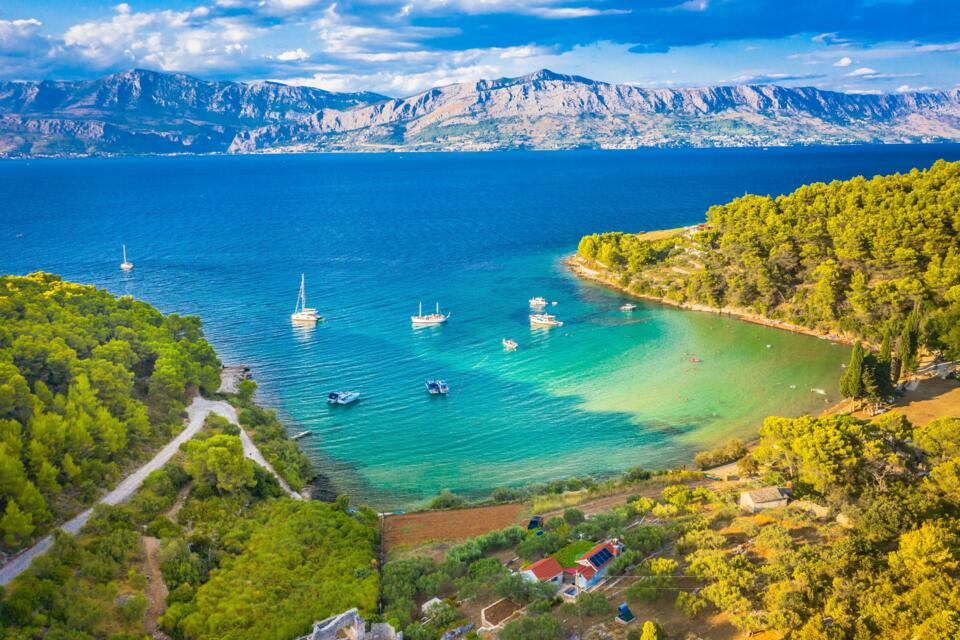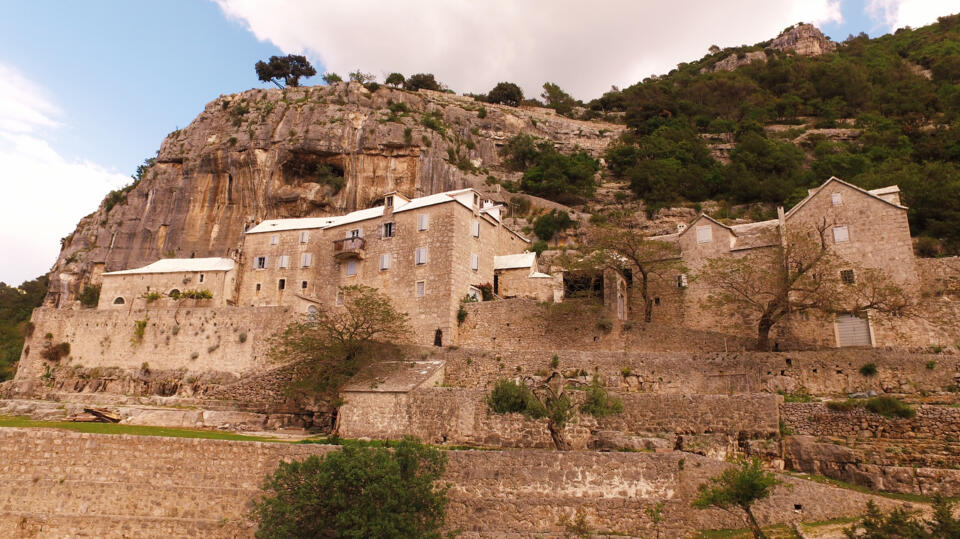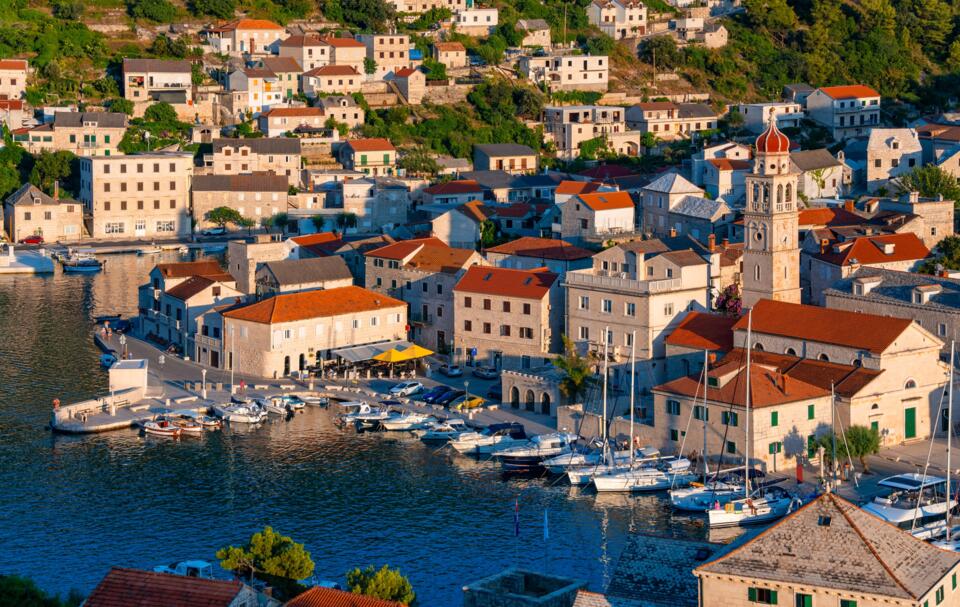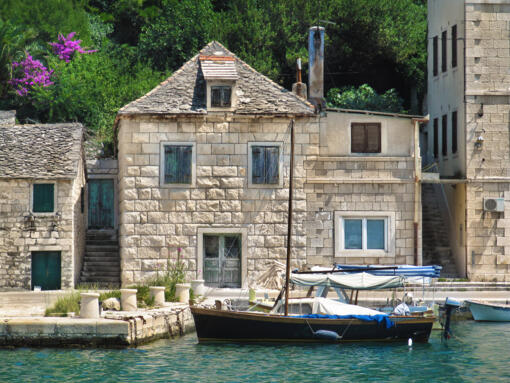Brač Island – Dalmatian Authenticity Preserved in the Finest White Stone
The island of Brač is the highest and the third largest island in the Adriatic Sea, a true micro-continent brimming with valuable cultural and historic heritage, breathtakingly beautiful nature, and stunning beaches. Located between Split and Hvar, Brač is easily accessible and offers ideal conditions for exploration for experienced sailors, families and recreational boaters alike. Set apart by its remarkable and unique beauty, the island of Brač in its heart hides superior snow-white stone that left its mark on the architectural history of Dalmatia as a whole, with gems such as the beautiful Diocletian's Palace in Split, the Cathedral of St James in Šibenik, the Cathedral of St Lawrence in Trogir, not to mention numerous others iconic buildings all over the world, such as the Parliament Buildings in Vienna and Budapest and the White House.

One of the biggest and most recognizable symbols of Brač, and of the entire Croatian coast, is the amazing Zlatni rat beach in Bol, located on the southern side of the island. This natural phenomenon, which changes shape depending on the winds and sea currents, is the perfect destination for sailing, windsurfing and enjoying the clear sea.
The northern shores of the island of Brač are a nautical oasis that is being discovered by more and more international boaters, as Brač has made a special effort to preserve its Dalmatian charm at the expense of rapid development, which is now more valued by discerning tourists. Our Brač journey begins with the quint town of Sutivan in the picturesque north west part of the island offers visitors a rare commodity – a spontaneous local experience. Sutivan is a spread around a small harbor that is mostly occupied by local boats, so it is wise to book ahead for a mooring spot next to the recently renovated breakwater.

East of Sutivan is Supetar, the transit hub of the island, connected to Split with a number of ferry routes. Being the main port on the island, it is full of hustle and bustle typical of such towns. Right next to the main church in the town center, you will find the remnants of 6th century mosaics. Recently an additional 30 commercial transit berths were added, making this a more boater friendly destination.
The next pearl in this gorgeous Brač necklace is Splitska, a place boaters should definitely visit. Secure mooring is available in the harbour of this lovely village studded with stone houses and a lush pine forest, while the nearby cove of Zastup is an excellent berthing alternative during north winds. Splitska is located just 2 km from the enchanting Škrip, tucked deep into the island. It is the oldest and most authentic settlement on the island of Brač and home of one of the most distinctive museums in Croatia – the Museum of the Island of Brač. In addition, you should definitely visit the Roman quarry of Rasohe, whose stone was used to build Diocletian's Palace, which is included on the UNESCO list of protected heritage.

Postira is the most fishing-oriented village on the island and was established as a harbour of the nearby Dol, a settlement whose captivating authenticity makes it a true paradise for foodies and wine aficionados.
Not far from the Postira you will find Lovrečina bay, one of the favorite bays for boaters on Brač. This spacious and well-protected bay offers a safe anchorage for boats, even in windy conditions. Its rich history includes the remains from the Roman and early Christian periods, the most famous being the remains of the Basilica of St. Lawrence from the 5th/6th century. Heading further east you will find the town of Pučišća, which is home to master stone cutters and is a white stone heaven. Even the street lamps are carved from the island’s famous white stone. The largest harbour on Brač is Milna, located on the western shore of the island, where you will find many mooring options, including a full service ACI Marina.

The interior of the island is not to be missed and includes gems such as the eco-ethno village of Dol, characterized by reddish stone houses, or the spiritual retreat of Blaca, built in the 16th century by the Glagolitic monks of Poljica fleeing the Ottomans. This unique complex carved into the rock is breathtaking and accessible on foot or by hiking trails, but its impressive history and architecture make it worth every step. Of course, the island's gastronomic offer does not disappoint either. Brač lamb, Procip cheese and Hrapoćuša cake are just some of the specialties worth trying. Many restaurants and taverns are located right on the coast, allowing boaters to effortlessly enjoy local delicacies after a day at sea.
Brač is an island that truly offers everything – from safe coves and marinas, to cultural and historical attractions, to authentic gastronomy and the hospitality of the local population. As a nautical destination, Brač offers an experience that combines adventure, relaxation and exploration, leaving every visitor eager to return.
Photo: Julien Duval/CTB, Ivo Biočina/CTB, Shutterstock
















